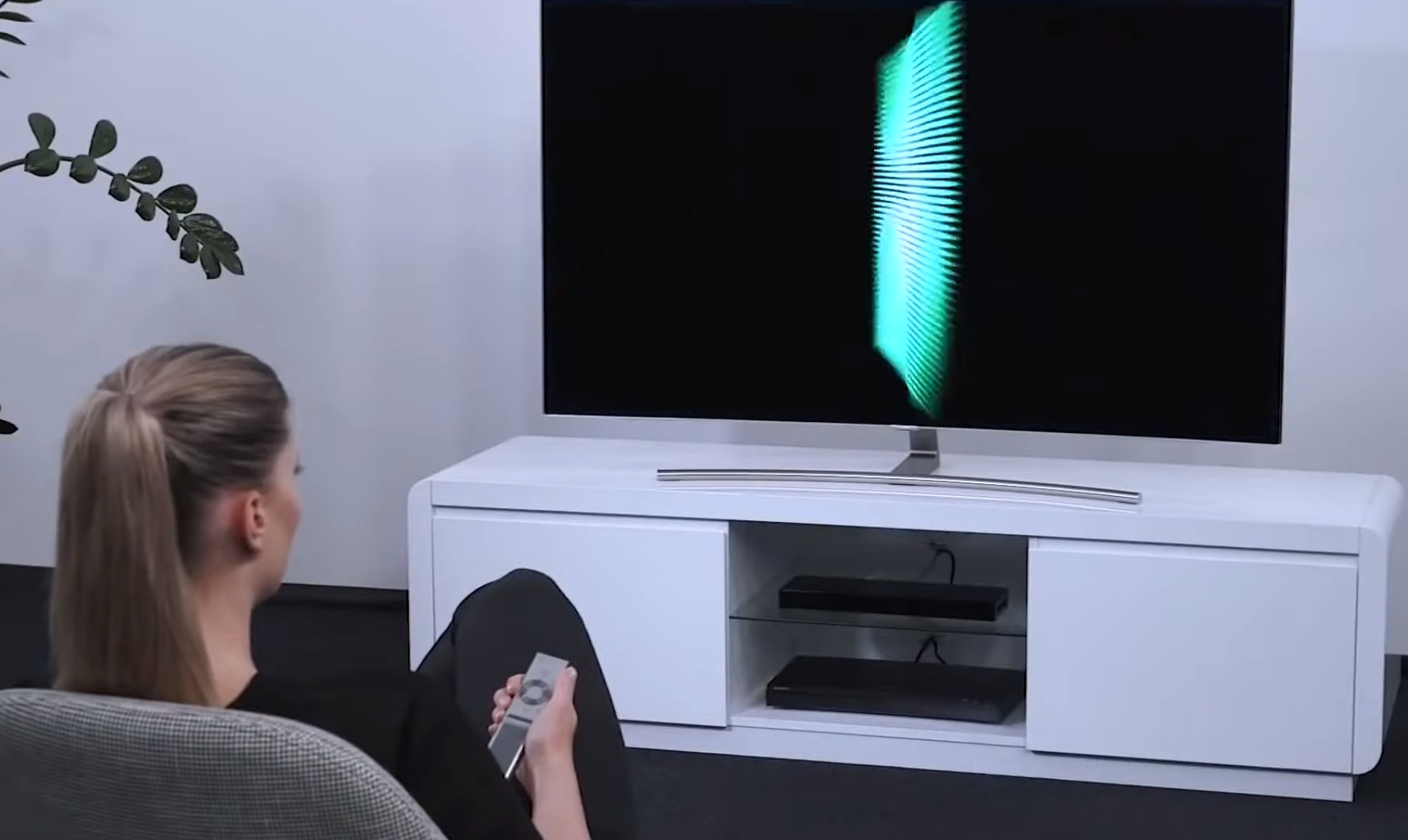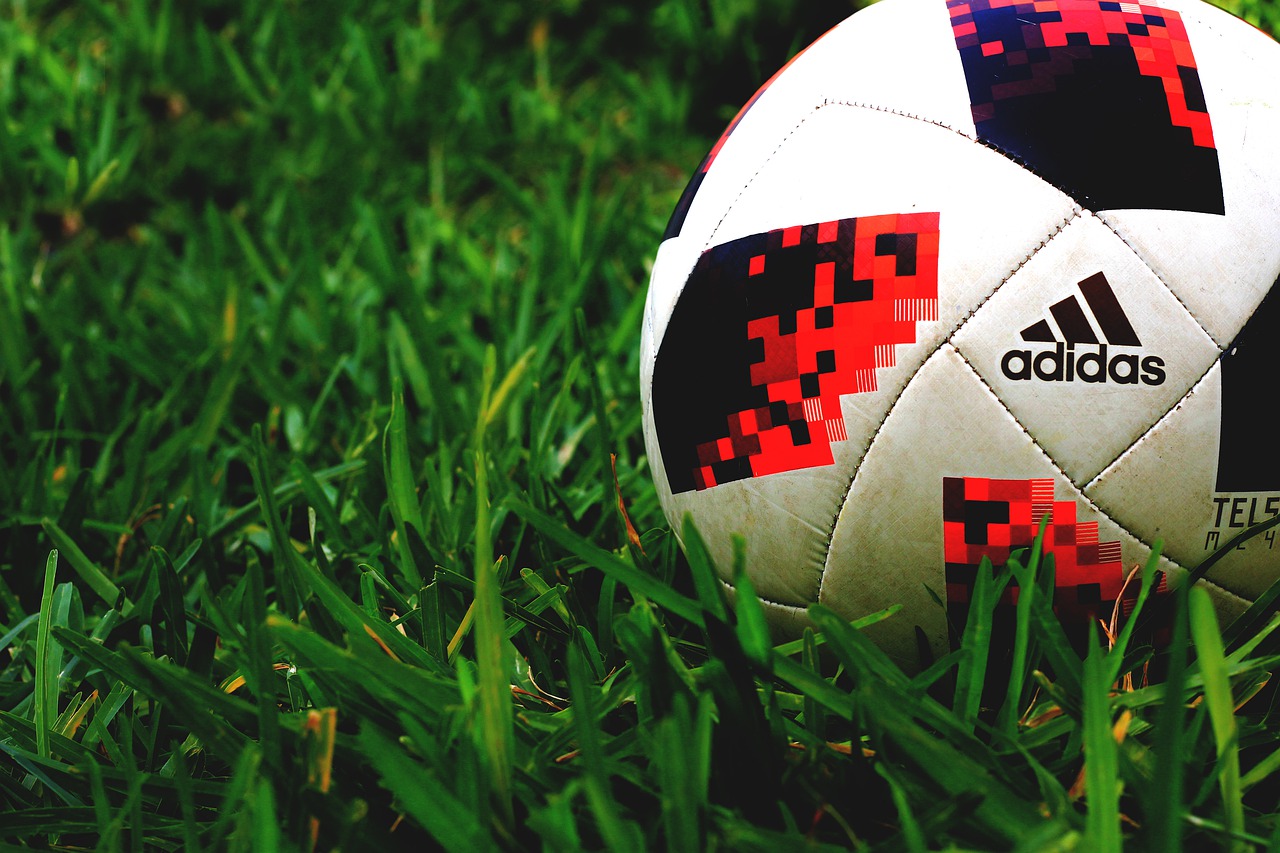The best fabric art markers for 2025
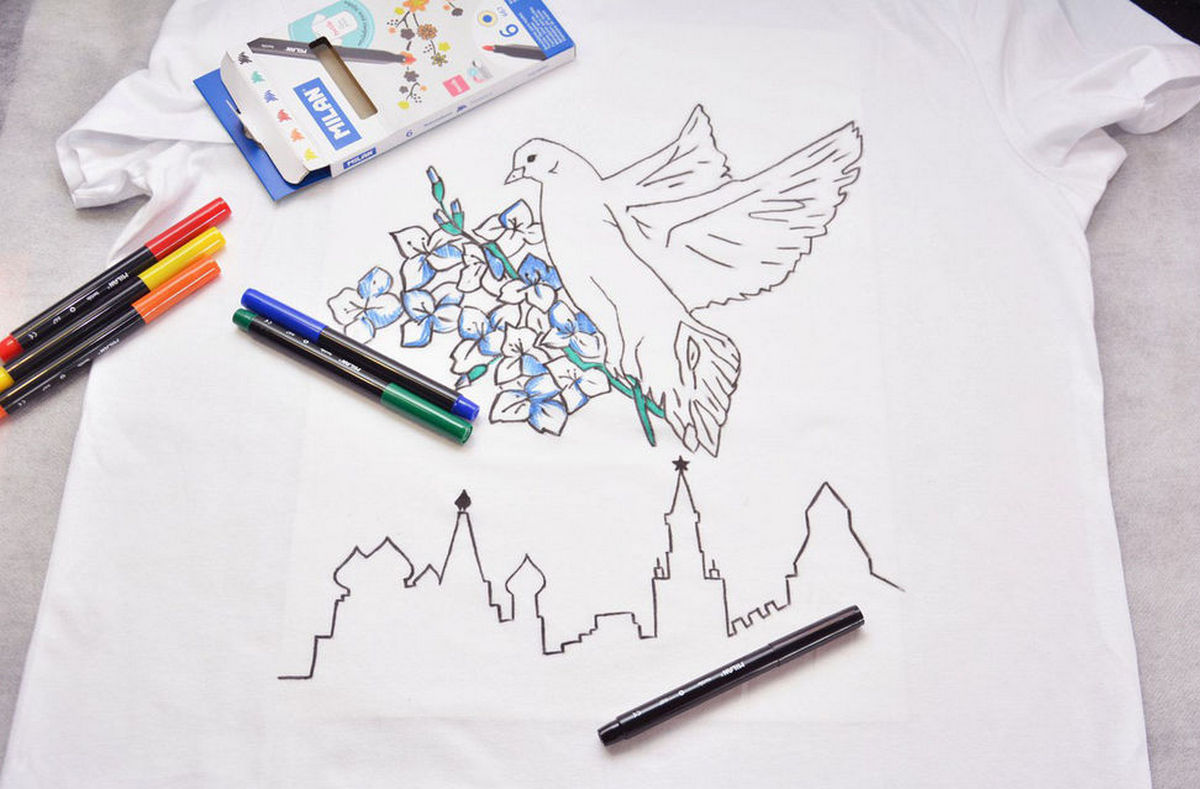
These markers or felt-tip pens are designed to imitate fine embroidery on fabric - for this, instead of a line seam, you just need to draw a line in the right place. Also, markers will be needed for drawing cutting lines on cuts of matter. Depending on their purpose, they can be permanent or removable (washed off or dried). It is especially convenient to use permanent samples to paint and apply decorative images on soft objects with irregular geometry: shoes, women's handbags, soft toys, etc. With the help of erasable felt-tip pens, you can properly process textile raw materials (create a pattern), preparing it for the production process.Accordingly, the type of tailoring tool under consideration has both applied and artistic purposes.
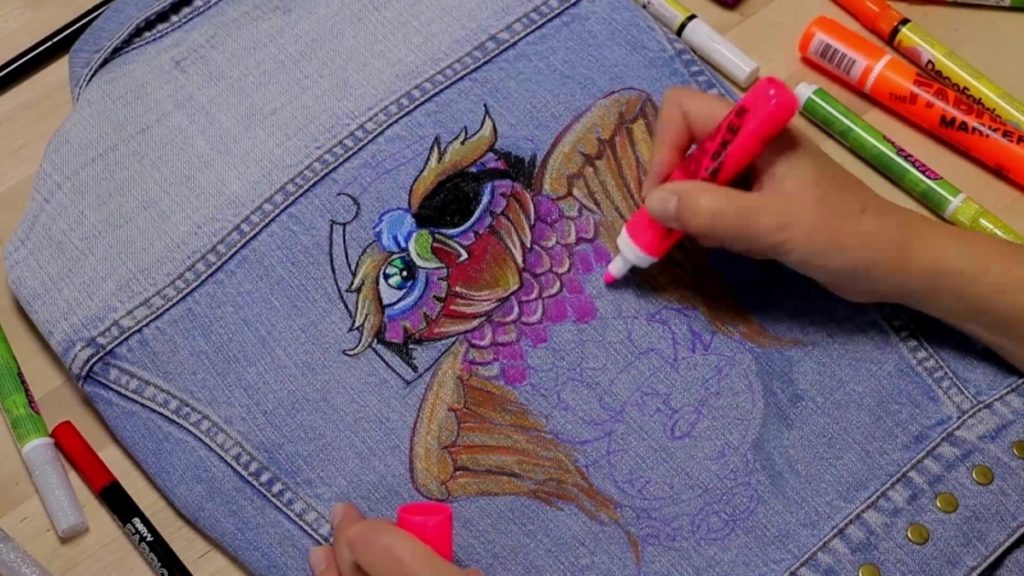
Content [Hide]
- 1 Fabric markers: general information
- 2 Benefits of using fabric markers
- 3 Modern types of markers for fabric
- 4 Types of marker tips
- 5 Refillable and replaceable tips
- 6 Features of using some types of markers
- 7 Brand differences of various models
- 8 The best fabric art markers for 2025
- 8.1 Permanent Models
- 8.1.1 4th place: Artline T-Shirt, 2.0 mm, yellow
- 8.1.2 3rd place: "Set of 4 colors, Koh-I-Noor 3205 5.0 mm, letter length 400 m, bag, euro hanger"
- 8.1.3 2nd place: "Centropen PERMANENT set, 8566, 4 colors"
- 8.1.4 1st place: "Marvy Uchida indelible, indelible fabric marker for light fabrics, for dyeing and painting clothes 2-4 mm, lilac"
- 8.2 Erasable (disappearing) models
- 8.1 Permanent Models
- 9 Conclusion
Fabric markers: general information
Such a felt-tip pen is a reservoir of paint, which, during use, flows to the tip and exits it onto the canvas, leaving a visible mark. This is a tool for writing and drawing on fabric. The main technical qualities for the tool in question are:
- The type of paint used in it - for each task it will have a different composition;
- The shape of the installed tip - this element will be responsible for the type of traces left by the ink.
These tools can be used in the following areas of sewing craft:
- For embroidery;
- For patchwork (patchwork);
- For tailoring;
- For drawing drawings or author's logos on garments;
- For painting on fabric (batik).
It is for the last two types of activity that permanent (indelible) felt-tip pens are used. Through them, it is possible to clearly define the contours of the image without unnecessary streaks and dirt. Similar tools are used for both natural and synthetic fabrics.
In general, all markers are structurally different in terms of the volume of the tank and the shape of the tip, and the thickness of the output lines will depend on the latter, as well as their density. The thinnest tip will allow you to draw clear outlines of the picture or make ultra-precise markings, and with the help of thicker tips you can even fully draw individual details of the picture and paint over them.
Benefits of using fabric markers
Due to the fact that the offer in the considered market segment is very diverse, the choice of a fabric marker (in comparison with other similar products) will be preferable for the following reasons:
- The applied contour is not smeared on the fabric;
- Felt pens give out a rich color, and the lines are applied very evenly;
- The result of the work dries quickly;
- The thickness of the lines can vary from 1 to 4 millimeters;
- Some marker paints allow you to make changes to an already applied drawing by simply washing the desired area with water (however, this must be done before the ink is completely dry);
- Do not have a toxic and unpleasant odor;
- They can be used in conjunction with paints for the full coloring of fabrics.
Modern types of markers for fabric
Artistic
They are used in various areas of needlework and sewing design. They are distinguished by the largest selection of colors and shades. They are allowed to be mixed with each other, which is akin to how ordinary paints are mixed in order to obtain a new color scheme. Through them, you can create full-fledged works of art. By themselves, they simultaneously play the role of paint and brush, which allows you to compactly and quickly do the job without using additional funds in the form of water or thinner. The main criterion for such tools is the transparency of the applied line. For example, products based on water or alcohol are characterized by the application of translucent lines, which allows the creation of graceful gradients and color transitions, very similar to watercolor. These devices will be extremely useful for those masters who work in the glazing technique. It is very easy to distinguish a high-quality and expensive art marker from a cheap one: the former, when mixed, produce a rich and clean result, while the latter will acquire a grayish tint.
Acrylic models are considered the best among artistic options. They are perfect for creating large-scale graffiti and photographic quality paintings on fabric bases. Their main technical parameters include the following qualities:
- They have a covering nature of applying paint - the line is thick and does not shine through;
- Drawing is available by the method of conventional ink - until the image is dry, it is possible to add original transitions or mix colors;
- After drying, acrylic will create a protective film - such things are not afraid of washing;
- The image can smoothly transition from fabric to clothing accessories - for example, from the fabric crown of a cap to its plastic visor.
The convenience of using acrylic models for fabric lies in the absence of the need for additional fuss with palettes and brushes, containers with paints and solvents. However, an acrylic felt-tip pen is considered a professional tool and requires considerable experience and skills to use it.
Washable
Devices of this type are rods, one side of which allows you to create markings, and with the help of the other side you can correct and erase the applied pattern. Such products for working on fabrics are marked with the mark "ERASER PEN". It is possible to apply them both on color and light canvas. Some of these devices may be marked "AIR ERASABLE", which means that after a certain period, the applied pattern will disappear from the fabric surface by itself. Accordingly, it is better not to mark patterns using the above markers, because the lines may disappear even before cutting or sewing begins.
Washable
Most experts rate these products as the most convenient in terms of marking work on the canvas. On such models there is an inscription "WATER ERASABLE". They leave distinct lines on the material, which remain stable until the material enters the aquatic environment.Using devices of this type, it is very convenient to implement large-scale embroidery schemes that are extremely time-consuming (for example, designer models of outerwear). It is worth noting that some cheap products from the washable group can leave their mark on the fabric forever if it is not rinsed in time in water. Otherwise, working with a washable marker will seem very simple: just mark up, finish sewing, then place the fabric in an aqueous environment until the felt-tip trace is completely removed. But only then the fabric can be washed using soap, powders or detergents. Also, it should be taken into account that water with a temperature of +40 degrees Celsius and above will not only not remove the paint, but even fix it on the surface. And its subsequent removal will be a very problematic process.
Disappearing
In the vast majority of cases, traces of such felt-tip pens on the fabric disappear within a day from the moment of application. This effect is achieved due to the interaction of air and the special chemical composition of the ink. However, there are models that are able to hold the drawing up to 72 hours in a row - they use a special ink structure, which is somewhat similar to temporary tattoos. It is convenient to work with such samples of tools on small canvases, and drawing is allowed both on light and colored canvas.
For black fabric
These tools are fundamentally different from all of the above. Firstly, they are focused on creating markup exclusively in white. Secondly, they can be both washed off and erased; they themselves are not capable of disappearing.The main problem with their use will be the gradual development of the pattern - it will become 100% clearly visible only a few minutes after application. Accordingly, some old-school specialists do not find this device convenient, and they prefer to use a bar of soap or a light pencil. Taking into account all the described nuances, these markers are not recommended to be used during the execution of the same type of urgent work, for example, in-line production of small identical patterns.
Types of marker tips
In total, they can be divided into three main types:
- Bullet-shaped (round) - the most versatile and popular type of writing node. They can be successfully used in both industrial and artistic instruments. Such tips give out a straight line, regardless of the angle of the tool itself. Great for creating professional photo-quality images
- Flat - this type is already considered more professional, so he deservedly won the sympathy of graphic artists, designers and fashion designers. By means of a wedge-shaped (straight) or beveled writing knot, it is possible to write real pictures, make graphic sketches, and draw font inscriptions. They have an additional variety called a calligraphy pen, which is best suited for vignettes and borders, as well as handwritten fonts.
- Carpal - they are structurally similar to a regular paint brush, as evidenced by their elongated pointed shape. Their main difference from the tips listed above lies in the soft and porous material of the writing head, which most accurately imitates the work of a brush on a fabric “as if on paper”.Thanks to the use of such a tool, it is possible to qualitatively reflect soft halftones, mix the desired colors. Products are marked "BRUSH-TYPE".
All tips vary in their thickness, which can range from 1 to 60 millimeters. It is this element of the writing instrument that will be responsible for the character and width of the line. Pencils with thin tips (from 1 to 3 millimeters) are good for creating complex patterns or for drawing small details of a pattern, without creating much emphasis on colors. Markers with a tip of medium thickness (from 4 to 10 millimeters) are considered universal devices, they also draw lines and paint over the drawing itself. Thick tips (more than 10 millimeters) are good for creating large type letters in graffiti or filling the background.
Refillable and replaceable tips
According to these two parameters, all tissue markers are divided into reusable and disposable:
- Reusable - they allow the replacement of worn tips, and their tank specially has a special valve through which you can replenish the finished ink. Naturally, this option is typical for models from expensive brands.
- Disposable - they are considered an economical option, they do not have the ability to change a worn tip or refill an empty tank. When the ink runs out, they are simply disposed of.
IMPORTANT! It is worth mentioning that some models of tips can not only be changed, but also independently give them the necessary shape. This fully applies to the flat type, to a lesser extent to others. You can change the shape simply by cutting the tip in the right place with a razor blade.
Features of using some types of markers
Permanent marker ink won't always just dry enough to stick to fabric. To achieve the maximum effect, the pattern must be ironed with a hot iron (without steam) or treated with a tailor's hairdryer. If a mistake was made in the work, then before the end of the drying period, you can wash the whole thing or a separate section, redo the drawing or make corrections, and fix the new result with an iron. Items painted with a permanent felt-tip pen should be washed at a low temperature (from +40 to +50 degrees Celsius) without the use of aggressive bleaches.
Before using a marker of any type for the first time, it is best to test its effect on an inconspicuous part of the product to be processed, or on a separate piece of similar fabric.
It must always be remembered that a fabric marker, as well as any felt-tip pen, cannot be left without a protective cap for a long time, otherwise the tip may dry out and stop passing paint.
Brand differences of various models
As a rule, the quality of fabric felt-tip pens directly depends on their manufacturer. Brand models differ from cheap ones in that they have:
- There is a wide color palette;
- Hue after drawing changes slightly;
- When mixed, the colors are rich and vibrant;
- High resistance to light and ultraviolet;
- Have the ability to refill and change the tip;
- The kit comes with additional accessories (rods, flasks with paints, tools for creating effects).
Separately, it is worth highlighting the special features, properties and special effects of fabric markers. The most common special effect used in these instruments is fluorescent. It will be very popular when you need to highlight the color very brightly on the canvas.Drawings applied with a similar felt-tip pen will glow beautifully in the sunlight. Also, it is possible to create lines in gold or silver colors - this requires the use of glitter or metallic inks. You can also use ink that contains small sparkles.
The best fabric art markers for 2025
Permanent Models
4th place: Artline T-Shirt, 2.0 mm, yellow
votes 1
This is a high-quality felt-tip pen based on pigment ink from the Japanese brand Artline. The tip thickness is 2.0 mm. After application and fixation, the image does not fade under ultraviolet rays, it is resistant to washing at temperatures up to 60 degrees Celsius inclusive. Outlining an additional outline will give the image a special depth and contrast. Ironing the pattern with an iron at medium power will enhance the fixation of colors.
Any template can be used as a contour. The recommended cost for retail chains is 275 rubles.

- Saturated color;
- Stability of the final drawing;
- Thick rod.
- Not detected.
3rd place: "Set of 4 colors, Koh-I-Noor 3205 5.0 mm, letter length 400 m, bag, euro hanger"
votes 0
This sample is directly intended for writing and painting on fabric. The applied traces are resistant to repeated standard washing in washing machines and have a special light fastness. Also, drawing on thermal paper is allowed, through which decals can be applied to the fabric by ironing.The devices are equipped with round tips with a diameter of 5 millimeters with a track width of 2 millimeters and a total track length of 500 meters. The recommended cost for retail chains is 330 rubles.

- Formation of a stable picture;
- Ability to work with thermal paper;
- Special light fastness.
- Not detected.
2nd place: "Centropen PERMANENT set, 8566, 4 colors"
votes 0
This set of permanent tools from the world famous brand CENTROPEN allows you to write on almost any surface: fabrics, glass, films, plastics. Can be used to create captions, headlines, advertising type. The color and saturation of the lines do not fade with time and do not fade under the sun. Marker ink is resistant to abrasion, interaction with water and precipitation. The composition of the ink is alcohol, which allows you to work in the technique of glazing. The round tip allows drawing lines up to 2.5 millimeters thick. There are four colors in the set: red, blue, green, black. The recommended cost for retail chains is 350 rubles.
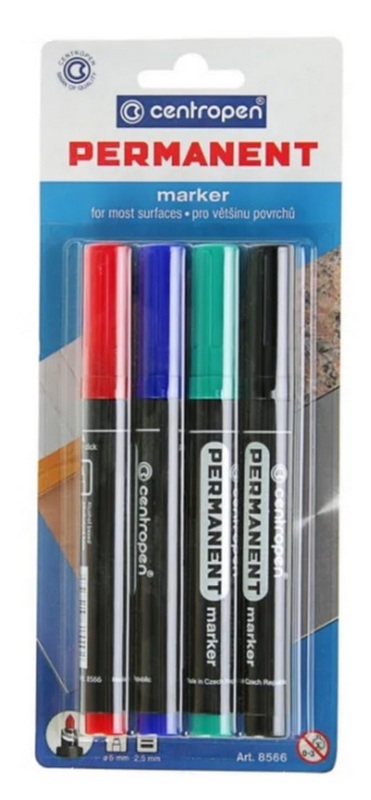
- Adequate value for money;
- Almost complete versatility;
- Quality manufacturing.
- Not detected.
1st place: "Marvy Uchida indelible, indelible fabric marker for light fabrics, for dyeing and painting clothes 2-4 mm, lilac"
votes 0
Designed for decorating light fabrics, has a thick tip, increased paint volume. The line thickness is 2-4 mm. The image does not require fixing with an iron.The created product can be washed already 48 hours after the application of the image. It is recommended to rinse the new fabric in warm water before painting in order to wash away the starch, which can impair the dyeing function. Recommended for use on natural fabrics. The model is popular for decorating clothes and home textiles, soft shoes and accessories - bags, baseball caps. The marker is made of plastic, there is a cap with a clip. Store horizontally, tightly closed after last use. Freezing is prohibited. A large volume of paint and a tip with increased strength properties will ensure a long tool life. The inks have an international certificate ACMI AP ("proven product"), confirming their complete safety for health (absence of harmful chemicals). The color of the ink is reflected in the color of the case. Shelf life 3 years. The recommended cost for retail chains is 450 rubles.

- The presence of an international certificate;
- Increased resistance to washing;
- Large amount of paint.
- A rather high price for a single-color unit of goods.
Erasable (disappearing) models
4th place: "Ager Chaco Ace Pen"
votes 0
This model produces smooth, thin and bright lines, which is the key to a good pattern. The self-extinguishing canvas marker will ensure that even the smallest details are accurately drawn, which will stand out very clearly against the fabric background. The ink easily disappears from the material without leaving spots or streaks. The line thickness is 0.5 mm. The markings fade and disappear from the canvas in about 24-72 hours.If you need to remove the markup earlier, you just need to erase the lines with a sponge moistened with water. The device must not be stored at sub-zero temperatures. Leaving the device without a cap for a long time is also unacceptable. Storage of the tool is allowed only in a vertical position with the rod down. The recommended cost for retail chains is 240 rubles.

- budget cost;
- Accuracy of drawing;
- Straightness of lines.
- Not recommended for use on bright white materials.
3rd place: "Gamma", self-disappearing, with corrector, color: purple"
votes 0
This model of the brand "Gamma" is used for embroidery, performing patchwork techniques (patchwork), for sewing and much more. Used when drawing thin lines on the surface. After applying the line/pattern to the fabric, it takes about 1-2 seconds to get a more saturated color. The image disappears after 1-14 days, depending on the density of the material. It is possible to immediately remove the drawn line with a corrector, or with plain water or a damp sponge. The image disappears after 1-2 seconds when the line is filled with a corrector once. The recommended cost for retail chains is 280 rubles.

- Marker and corrector in one device;
- High-quality removal of lines;
- Great color difference.
- Not detected.
2nd place: "611810 Fabric marker, self-disappearing, extra fine Prym"
votes 0
This sample has a particularly thin purple stem. It is particularly suitable for marking markings that should not be visible after sewing, quilling or embroidery. It is used when cutting the canvas, as well as for special marking.The applied line is gradually removed over several days. The model is developed by the German company Prym, a well-known world leader in the production of high-quality accessories for sewing and needlework. The recommended cost for retail chains is 470 rubles.

- Quality manufacturing;
- clear color;
- Guaranteed disappearance.
- Not detected.
1st place: "MADEIRA, fabric marker, self-disappearing purple"
votes 0
This model is intended for marking on light fabrics, the design provides for thin and thick tips. It is also ideal for use on fabric and Avalon water-based embroidery film. The marking disappears on its own after 2 days, depending on the composition of the fabric material. The markings can also be removed with a damp cloth. It is not recommended to iron and wash with soap until the lines disappear. The recommended cost for retail chains is 540 rubles.

- Two tips on one tool;
- Versatility in terms of working with different materials;
- Quality manufacturing.
- Not detected.
Conclusion
The determining condition when using a marker of any kind for marking fabric bases is its preliminary check in action. It is always necessary to verify the stability of the applied lines, and for disappearing devices - to verify the 100% possibility of their removal. Only after understanding the peculiarities of using a fabric marker, you can proceed directly to its use in the implementation of the embroidery scheme.
new entries
Categories
Useful
Popular Articles
-

Top ranking of the best and cheapest scooters up to 50cc in 2025
Views: 131652 -

Rating of the best soundproofing materials for an apartment in 2025
Views: 127691 -

Rating of cheap analogues of expensive medicines for flu and colds for 2025
Views: 124519 -

The best men's sneakers in 2025
Views: 124034 -

The Best Complex Vitamins in 2025
Views: 121940 -

Top ranking of the best smartwatches 2025 - price-quality ratio
Views: 114980 -

The best paint for gray hair - top rating 2025
Views: 113396 -

Ranking of the best wood paints for interior work in 2025
Views: 110319 -

Rating of the best spinning reels in 2025
Views: 105330 -

Ranking of the best sex dolls for men for 2025
Views: 104367 -

Ranking of the best action cameras from China in 2025
Views: 102217 -

The most effective calcium preparations for adults and children in 2025
Views: 102012


